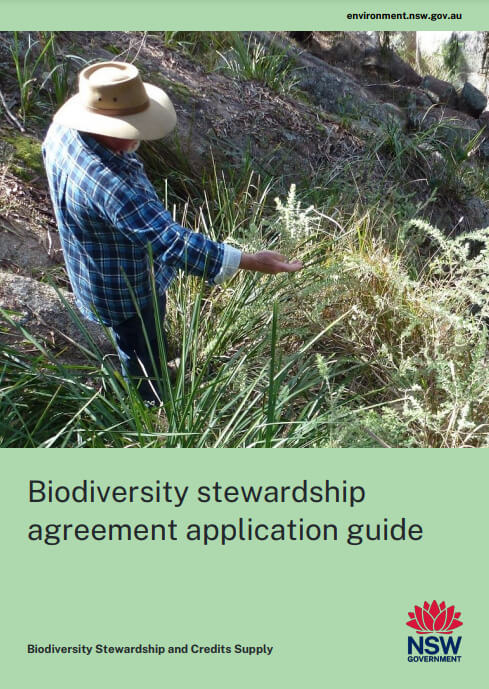Application forms can be completed electronically (including signatures) or printed out. All landowners need to sign the form.
Your completed application form (electronic or scanned hard copy) can be sent by email or through the Biodiversity Offsets and Agreement Management System (BOAMS).
You can also email the Taskforce to get access to a shared folder to upload GIS shapefiles and JPEG maps, or for assistance completing the application form.
Biodiversity stewardship agreement application guide
This Biodiversity stewardship agreement application guide provides information for anyone interested in establishing a biodiversity stewardship agreement (BSA), and for accredited assessors working with landholders to establish BSAs.
The guide includes an overview of the processes involved and information that can help you establish a BSA.
You can read the whole guide to become familiar with the complete BSA process or read just the sections that are relevant to your current stage.
- Biodiversity stewardship agreement application form (PDF 1.23KB)
- Biodiversity stewardship agreement template (read only) (PDF)(660 KB)
- 2023-24 Total Fund Deposit Calculator (XLSM)(117 KB)
- Seeking Mortgagee Consent for Agreement with the Credits Supply Taskforce (PDF)(110 KB)
- Mortgagee consent sample letters (DOCX)(88 KB)
- Caveator consent sample letter (DOCX)(88 KB)
- Biodiversity Offsets and Agreement Management System
